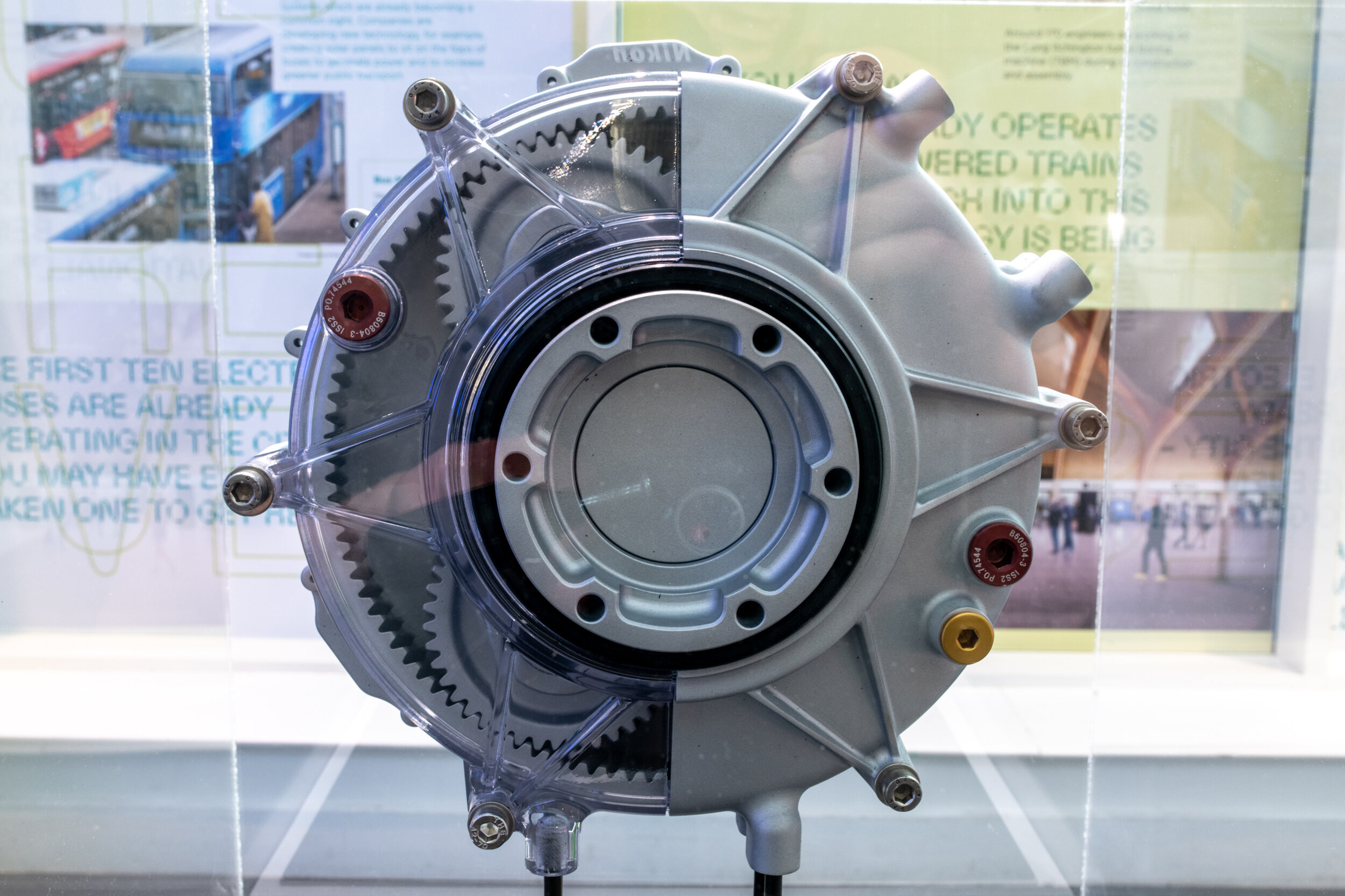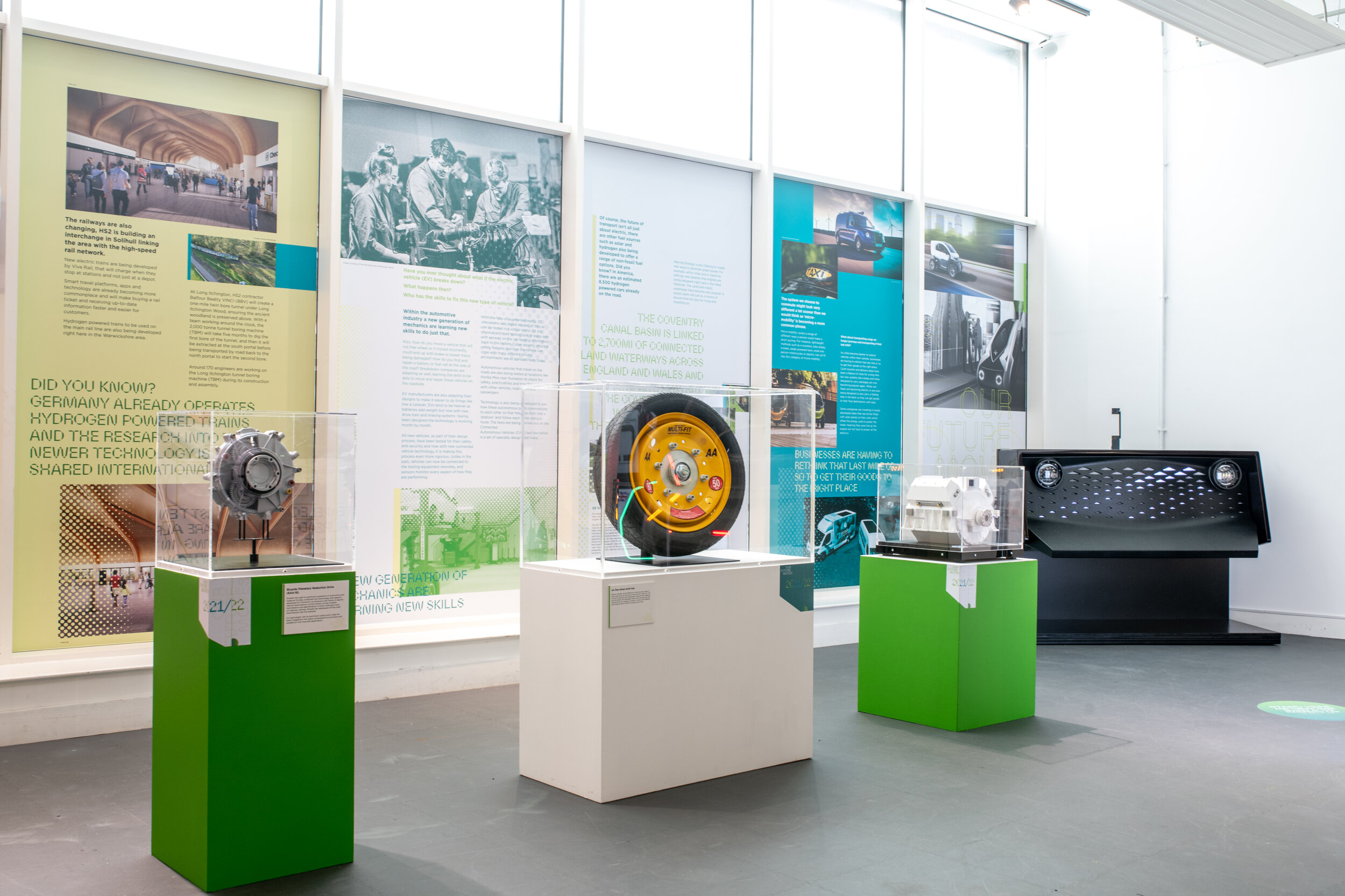
Our Future Moves
Getting Around // Transport Innovation
What will travelling look like in the future? Will we all be wearing rocket packs, sending holograms of ourselves to work while we work remotely?
In order to plan new transport solutions or to better understand how people or vehicles use a space, lots of data needs to be gathered to form a bigger picture. One of the planning tools commonly used for this is called Lidar (Light Detection and Ranging). It uses light beams to measure the distance between points and the time it takes to hit sensors. This allows digital 3D representations of the area or objects in that space to be created, sometimes this is called creating a digital twin.
This tool enables virtual worlds to be created where virtual vehicles, traffic flows, and interactions between objects can all be tested without having to create real life models. City planners can use it to design traffic systems; car companies use it to design and test how new vehicles would behave on the roads. It can even be used to tell you where bushes are too big on the railway lines and need cutting.




Designers look at how humans interact with vehicles. This could involve testing seat designs to make sure they are comfortable for long journeys, softening the suspension to help prevent motion sickness; it could also be checking that doors and boots can be opened regardless of the height of the user. Designers and engineers also look at how we use the instruments, interact with screens and even the types of objects or pets we want to carry in the boot just to make sure it fits with the user's needs. They improve their products by making surfaces easier to clean or using new technology to do the work for us.
Robo Yogi Bumper
Ricardo Multi-Speed Electric Drive Unit Concept (EDU)
Ricardo has developed a multi-speed EDU concept design incorporating a 3-speed DCT layout with a high power density motor and a state-of-the-art inverter. This example has an optimised motor that reduces propulsion system cost by £300 compared to a 1-speed solution. This makes the technology used in the EV more efficient and therefore more cost effective so that the EV can travel for longer and further and reduces battery size.
Ricardo Planetary Reduction Drive (EA4-1S)
Ricardo has used its significant experience in automotive and hypercar E-Axles, combined with technology and research developed for Formula E, to produce a new family of electric vehicle transmissions. As the industry moves towards hybridisation and electrification of both motorsport and on-highway vehicles, Ricardo has developed off-the-shelf transmissions like this example. It is lightweight with an aluminium casing and is ideal for direct integration into space constrained environments and suitable for hub mounted applications.
Robo Yogi 3D Dogs Paw
Jaguar Land Rover developed a unique 3D-printed dog paw to help engineers assess the durability of the new Land Rover Defender. The ‘RoboYogi’ paw was used to test the rear bumper’s ability to withstand a dog’s claws scraping the paint highlighting how Jaguar and Land Rover vehicles are designed to meet the demands of owners’ lifestyles.
Yogi the Labrador, a resident at the National Guide Dog Breeding Centre, was tasked with jumping in and out of the new Land Rover Defender boot, with every step recorded by pressure mapping technology. The data allowed the team to benchmark this real-world outdoor scenario against ‘RoboYogi’; from how a mid-sized dog clambers in and out, to the pressure applied by the claws and the pads on its feet. Nine-year-old Yogi’s paw was then used to model and 3D-print a spring-loaded replica, allowing the claws to follow contours and apply pressure evenly across the bumper.
AA free wheel multi hub
Electric vehicles can be difficult to move and very heavy if they break down at the side of the road with a flat tyre. The AA, AE Oscroft, and its partners have developed a special free wheeling hub that allows the damaged wheel to be removed and the vehicle driven to a garage or towed. It comes with different stud holes as often where the studs are can vary.
The Manifesto Car
Does a car know when it is looking at someone who is happy? Does a car know what you're about to do next? How can a car tell us, that it is watching us? The Manifesto 035 by Vital Auto is a design investigation, exploring the relationship between autonomous and semi-autonomous vehicles and pedestrians. It uses state of the art machine learning techniques (pose estimation) and creative electronics to express itself with 110 individually controlled lights. It locks onto the nearest face and responds to different body poses with unique light signatures.
Public transport is changing, buses are going green and many operators are switching from diesel to electric or even hydrogen powered. By 2025, 291 buses in Coventry will be electric - making it the first city in the country to host all electric buses. The first ten electric buses are already operating in the city!
Trailar Model
Trailar solar mats can be fitted to any commercial vehicle, including buses, and the ultra-thin solar mats are fitted to the roof. These are then connected to the Smart Charge Controller, which regulates the transfer of energy from the alternator and solar mats to the battery meaning the energy generated by the mat can be used to directly power the vehicle. Sensors monitor all electrical characteristics, calculating fuel & CO2 saved by the utilization of clean, solar energy so that companies can see how much energy they are using.
New ways to charge the electric buses’ batteries are also being tested. Buses aren’t just plugged in at the depot but self-charge as they travel using induction charging embedded in the road or even at points along their route. Hybrid buses use a mixture of power systems which are already becoming a common sight. Companies are developing new technology, for example, creating solar panels to sit on the tops of buses to generate power and to increase greener public transport.
The system we choose to commute might look very different in the near future as ‘micro-mobility’ is becoming a more common phrase. Micro-mobility covers a range of different ways a person could make a short journey. For instance, lightweight methods such as e-scooters, bike shares, e-bikes, pedal powered taxis, small one person motorcycles or electric cars all fit into this category of micro-mobility.
Replica of the driver’s cab end from the Coventry Very Light Rail (VLR) Vehicle
Coventry City Council and Dudley Metropolitan Borough Council are collaborating to see the creation of the first Very Light Railway in Coventry, with the first route for Coventry linking the Rail Station, City Centre, and University Hospital.
Coventry Very Light Rail (VLR) is a low emission environmentally friendly mass transit system using rails which are set in the road meaning it fits more easily within the existing road surfaces so there is less disruption whilst it's being built. The innovative vehicle is battery-powered, with no tailpipe emissions or costly overhead power lines. This means that maintaining it will be easier and will be more cost effective to run than traditional tram systems.
Coventry VLR is designed to encourage commuters to use public transport rather than cars. By offering a high-quality and affordable public transport alternative to the car, the aim is to reduce levels of traffic congestion across the UK wherever VLR is implemented. The first route will be announced in 2022, with a view to having an operational section in Coventry by late 2025.
In Coventry, WMG at the University of Warwick is leading the Vehicle and Track Research & Development project, together with their partners TDI (Vehicle) and Ingerop (Track). Developing this integrated VLR system will become a blueprint that will be commercially available to other towns and cities across the UK and globally.
The Dudley Very Light Rail National Innovation Centre Saw work begin on site in June 2020 for the test track. This new centre includes a 2.2km track which can carry any type of rail vehicle (heavy, light or very light) and 15m radius loop. This means that the Coventry VLR vehicle can undergo testing when it arrives in 2021. Testing will evaluate acceleration, cruising, braking and endurance, as well as the vehicle’s cornering behaviour, including noise and vibration.
RDM/ Aurrigo 12 seater pod
The Aurrigo shuttle is based on their smaller 4 seater autonomous pods but are designed for locations and journeys where more passengers need to be carried. For example, airports or even on golf courses for events like the 2020 Welsh open where it was trailed taking golfers and caddies safely to start and finish points. It is built with high strength composite material to create a lightweight, efficient vehicle offering a range of up to 124 miles on a single charge. Linked to 5G technology the pods journey and location can be tracked remotely and smart technology navigates it during the journey.
All new vehicles, as part of their design process, have been tested for their safety and security and now with new connected vehicle technology, it is making this process even more rigorous. Unlike in the past, vehicles can now be connected to the testing equipment remotely, and sensors monitor every aspect of how they are performing. With the help of augmented reality, 3D simulations and digital models of the car can be tested in a virtual world. On site physical and road testing look at every part with sensors on the car feeding information back to the testers. Cyber security, physical safety features and how the vehicle can cope with many different driving environments are all standard tests today.
Jaguar I-PACE - Reimagining the future of modern luxury by design
Jaguar Land Rover is reimagining the future of modern luxury by design through its two distinct, British brands. The current model range embraces fully electric, plug-in hybrid and mild-hybrid vehicles, as well as the latest diesel and petrol engines. Jaguars and Land Rovers are in demand around the world and in 2020 sold 425,974 vehicles in 127 countries. Land Rover is a leader of luxury SUVs through its three families of Range Rover, Discovery and Defender. Jaguar is the first ever brand to offer a premium all-electric performance SUV, the Jaguar I-PACE.
The company has two major design and engineering sites, three vehicle manufacturing facilities, an Engine Manufacturing Centre and a Battery Assembly Centre in the UK. The company also have vehicle plants in China, Brazil, India, Austria and Slovakia. Three of their seven technology hubs are in the UK – Manchester, Warwick (NAIC - National Automotive Innovation Centre) and London – with additional sites in Shannon, Ireland, Portland, USA, Budapest, Hungary and Shanghai, China.
Central to their Reimagine strategy is the electrification of both the Land Rover and Jaguar brands with two clear, distinct personalities. All Jaguar and Land Rover nameplates will be available in pure electric form by the end of the decade. This marks the start of the company’s journey to become a net zero carbon business across its supply chain, products and operations by 2039.











